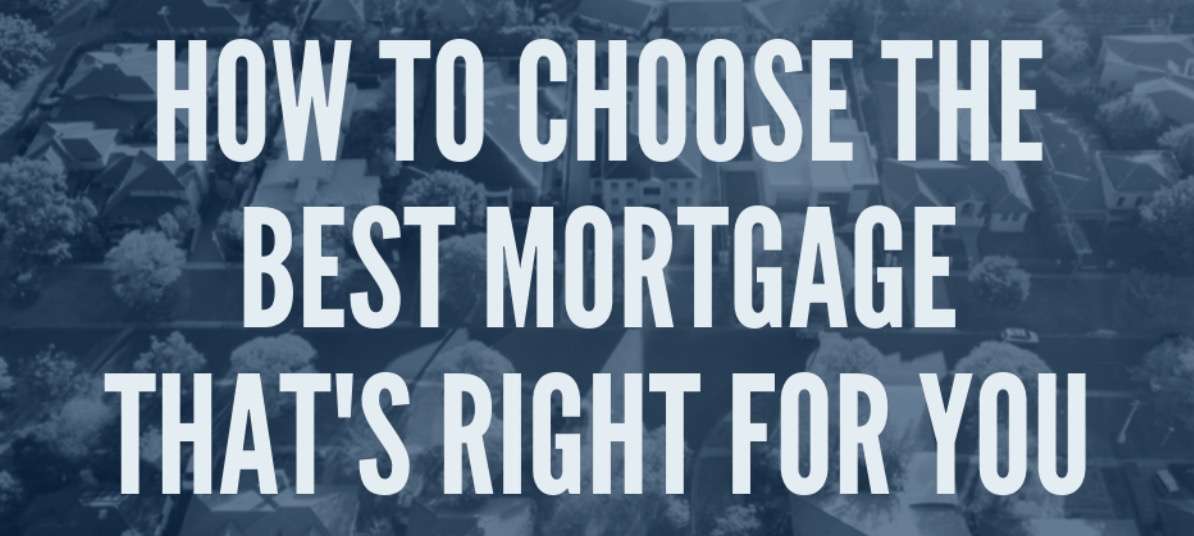Not all mortgage products are created equal :
Unless you can buy your home entirely in cash, finding the right property is only half the battle. The other half is choosing the best type of mortgage. You’ll likely be paying back your mortgage over a long period of time, so it’s important to find a loan that meets your needs and budget. When you borrow money from a lender, you’re making a legal agreement to repay that loan over a set amount of time (albeit with interest).
KEY TAKEAWAYS
- The two main parts of a mortgage are principal, which is the loan amount, and the interest charged on that principal.
- The U.S. government does not function as a mortgage lender, but it does guarantee certain types of mortgage loans.
- The six main types of mortgages are conventional, conforming, non-conforming, Federal Housing Administration-insured, U.S. Department of Veterans Affairs-insured, and U.S. Department of Agriculture-insured.
What Is a Mortgage?
There are two components to your mortgage payment—principal and interest. Principal refers to the loan amount. Interest is an additional amount (calculated as a percentage of the principal) that lenders charge you for the privilege of borrowing money that you can repay over time. During your mortgage term, you pay in monthly installments based on an amortization schedule set by your lender.
Another factor involved in pricing a mortgage is the annual percentage rate (APR), which assesses the total cost of a loan. APR includes the interest rate and other loan fees.
The Six Main Types of Mortgages
Not all mortgage products are created equal. Some have more stringent guidelines than others. Some lenders might require a 20% down payment, while others require as little as 3% of the home’s purchase price. To qualify for some types of loans, you need pristine credit. Others are geared toward borrowers with less-than-stellar credit.
The U.S. government isn’t a lender, but it does guarantee certain types of loans that meet stringent eligibility requirements for income, loan limits, and geographic areas. Here’s a rundown of various possible mortgage loans.
Fannie Mae and Freddie Mac are two government-sponsored enterprises that buy and sell most of the conventional mortgages in the U.S.
1. Conventional Mortgages
A conventional loan is a loan that is not backed by the federal government. Borrowers with good credit, stable employment and income histories, and the ability to make a 3% down payment can usually qualify for a conventional loan backed by Fannie Mae or Freddie Mac, two government-sponsored enterprises that buy and sell most conventional mortgages in the United States.1 2
To avoid needing private mortgage insurance (PMI), borrowers generally need to make a 20% down payment.3 Some lenders also offer conventional loans with low down payment requirements and no private mortgage insurance (PMI).
2. Conforming Mortgage Loans
Conforming loans are bound by maximum loan limits set by the federal government. These limits vary by geographic area. For 2021, the Federal Housing Finance Agency set the baseline conforming loan limit (CLL) at $548,250 for one-unit properties.4
However, the FHFA sets a higher maximum loan limit in certain parts of the country (for example, in New York City or San Francisco). That’s because home prices in these high-cost areas exceed the baseline loan limit by at least 115% or more.5 4
$510,400
The conforming mortgage loan limit for a one-unit property in 2020.6
3. Non-Conforming Mortgage Loans
Non-conforming loans generally can’t be sold or bought by Fannie Mae and Freddie Mac, due to the loan amount or underwriting guidelines. Jumbo loans are the most common type of non-conforming loans. They’re called jumbo because the loan amounts typically exceed conforming loan limits.
These types of loans are riskier to a lender, so borrowers typically must show larger cash reserves, make a down payment of 10% to 20% (or more), and have strong credit.
4. Government-Insured Federal Housing Administration (FHA) Loans
Low-to-moderate-income buyers purchasing a house for the first time typically turn to loans insured by the Federal Housing Administration (FHA) when they can’t qualify for a conventional loan. Borrowers can put down as little as 3.5% of the home’s purchase price.7
FHA loans have more-relaxed credit-score requirements than conventional loans. However, the FHA doesn’t directly lend money; it guarantees loans by FHA-approved lenders. There is one drawback to FHA loans. All borrowers pay an upfront and annual mortgage insurance premium (MIP)—a type of mortgage insurance that protects the lender from borrower default—for the loan’s lifetime.8
FHA loans are best for low-to-moderate income borrowers who can’t qualify for a conventional loan product or anyone who cannot afford a significant down payment. FHA loans allow a FICO score as low as 500 to qualify for a 10% down payment and as low as 580 to qualify for a 3.5% down payment.9
The U.S. Department of Veterans Affairs guarantees mortgages for qualified service members that require no down payment.
5. Government-Insured Veterans Affairs (VA) Loans
The U.S. Department of Veterans Affairs (VA) guarantees home buyer loans for qualified military service members, veterans, and their spouses. Borrowers can finance 100% of the loan amount with no required down payment. Other benefits include a cap on closing costs (which may be paid by the seller), no broker fees, and no MIP.
VA loans do require a funding fee, a percentage of the loan amount that helps offset the cost to taxpayers. The funding fee varies depending on your military service category and loan amount. The following service members do not have to pay the funding fee:10
- Veterans receiving VA benefits for a service-related disability
- Veterans who would be entitled to VA compensation for a service-related disability if they didn’t receive retirement or active duty pay
- Surviving spouses of veterans who died in service or from a service-related disability
VA loans are best for eligible active military personnel or veterans and their spouses who want highly competitive terms and a mortgage product tailored to their financial needs.
6. Government-Insured U.S. Department of Agriculture (USDA) Loans
The U.S. Department of Agriculture (USDA) guarantees loans to help make homeownership possible for low-income buyers in rural areas nationwide. These loans require little to no money down for qualified borrowers, as long as properties meet the USDA’s eligibility rules.11
USDA loans are best for homebuyers in eligible rural areas with lower household incomes, little money saved for a down payment, and can’t otherwise qualify for a conventional loan product.
Fixed-rate loans are best for people who plan to live in their homes for a long time.
Fixed-Rate Mortgages
Mortgage terms, including the length of repayment, are a key factor in how a lender prices your loan and your interest rate. Fixed-rate loans are what they sound like: A set interest rate for the life of the loan, usually from 10 to 30 years.
If you want to pay off your home faster and can afford a higher monthly payment, a shorter-term fixed-rate loan (say 15 or 20 years) helps you shave off time and interest payments. You’ll also build equity in your home much faster.
Opting for a shorter fixed-term mortgage means monthly payments will be higher than with a longer-term loan. Crunch the numbers to ensure your budget can handle the higher payments. You may also wish to factor in other goals, such as saving for retirement or an emergency fund.
Fixed-rate loans are ideal for buyers who plan to stay put for many years. A 30-year fixed loan might give you wiggle room to meet other financial needs. However, if you have the appetite for a little risk and the resources and discipline to pay your mortgage off faster, a 15-year fixed loan can save you considerably on interest and cut your repayment period in half.
Adjustable-rate mortgages are riskier than fixed-rate ones but can make sense if you plan to sell the house or refinance the mortgage in the near term.
Adjustable-Rate Mortgages
Adjustable-rate mortgages (ARMs) have a fixed rate for an initial period of three to 10 years, but after that period expires the rate fluctuates with market conditions. These loans can be risky if you’re unable to pay a higher monthly mortgage payment once the rate resets.
Some ARM products have a rate cap specifying that your monthly mortgage payment cannot exceed a certain amount. If so, crunch the numbers to ensure that you can potentially handle any payment increases up to that point. Don’t count on being able to sell your home or refinance your mortgage before your ARM resets because market conditions—and your finances—could change.
ARMs are a solid option if you don’t plan to stay in a home beyond the initial fixed-rate period or know that you intend to refinance before the loan resets. Why? Interest rates for ARMs tend to be lower than fixed rates in the early years of repayment, so you could potentially save thousands of dollars on interest payments in the initial years of homeownership.
First-Time Assistance Programs
Special programs sponsored by states or local housing authorities offer help specifically to first-time buyers. Many of these programs are available based on buyers’ income or financial need. These programs, which usually offer assistance in the form of down payment grants, can also save first-time borrowers significant money on closing costs.
The U.S. Department of Housing and Urban Development (HUD) lists first-time homebuyer programs by state. Select your state and then choose “Homebuying Assistance” to find the program nearest you.
Mortgage lending discrimination is illegal. If you think you’ve been discriminated against based on race, religion, sex, marital status, use of public assistance, national origin, disability, or age, there are steps you can take. One such step is to file a report to the Consumer Financial Protection Bureau (CFPB) or with HUD.
Mortgages for First-Time Buyers
All these loan programs (with the exception of first-time homebuyer assistance programs) are available to all homebuyers, whether it’s your first or fourth time purchasing a home. Many people falsely think FHA loans are available only to first-time buyers, but repeat borrowers can qualify as long as the buyer has not owned a primary residence for at least three years leading up to the purchase.12
Choosing the loan that’s best for your situation relies primarily on your financial health: Your income, credit history and score, employment, and financial goals. Mortgage lenders can help analyze your finances to help determine the best loan products. They can also help you better understand the qualification requirements, which tend to be complex.
A supportive lender or mortgage broker may also give you homework—targeted areas of your finances to improve—to put you in the strongest position possible to get a mortgage and buy a home.
The Bottom Line
No matter which loan type you choose, check your credit report beforehand to see where you stand. You’re entitled to one free credit report from each of the three main reporting bureaus each year through annualcreditreport.com. From there, you can spot and fix errors, work on paying down debt, and improve any history of late payments before you approach a mortgage lender. To further protect your credit report from errors and other suspicious marks, considering utilizing one of the best credit monitoring services currently available.
It can be advantageous to pursue financing before you get serious about looking at homes and making offers. You’ll be able to act more quickly and may be taken more seriously by sellers if you have a preapproval letter in hand.




